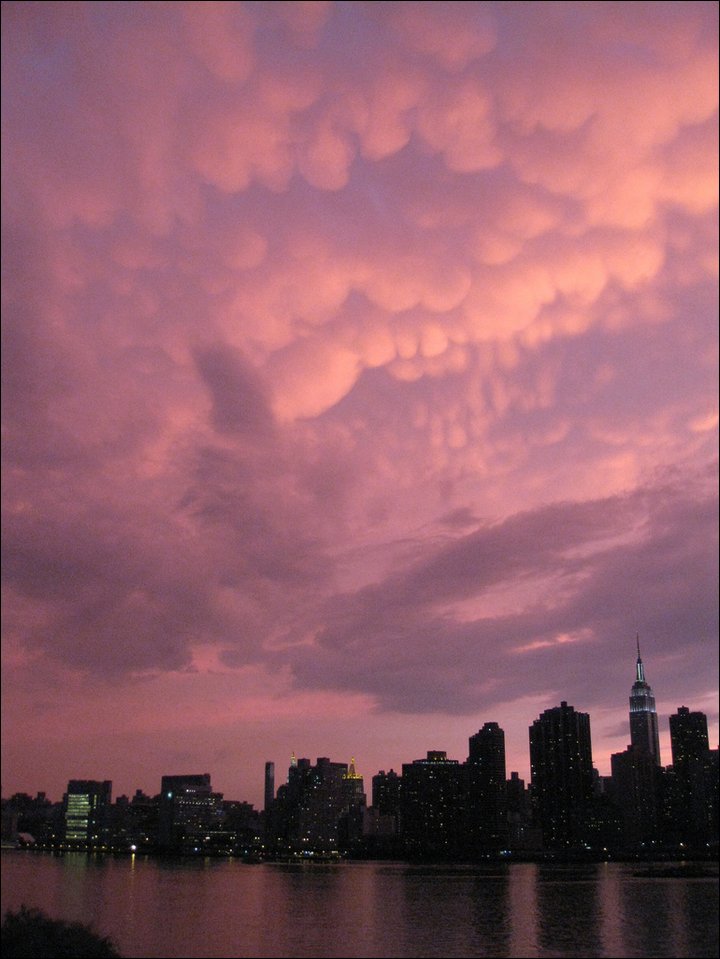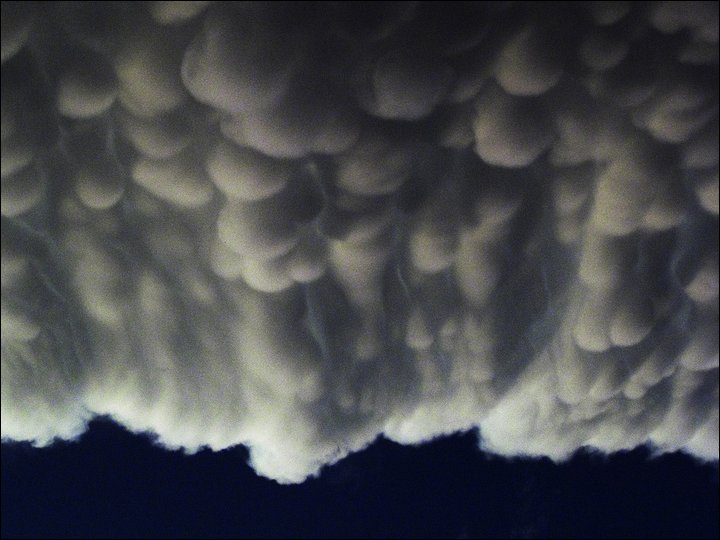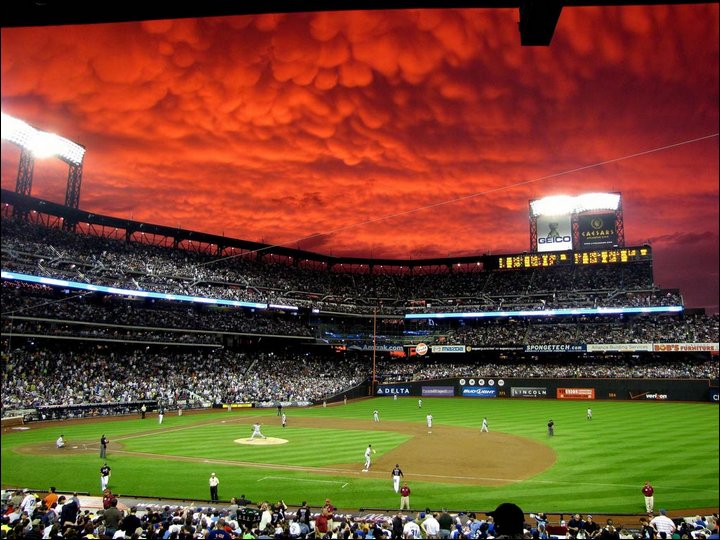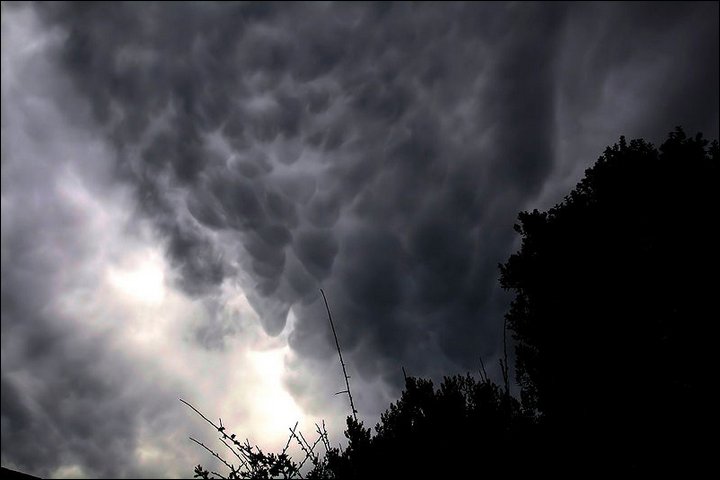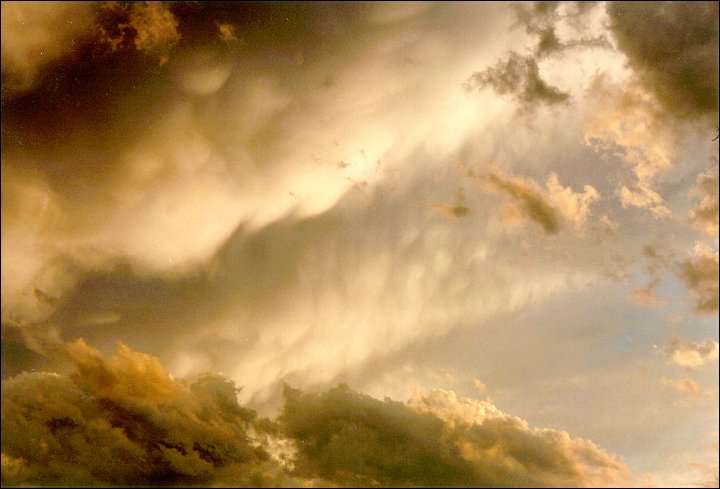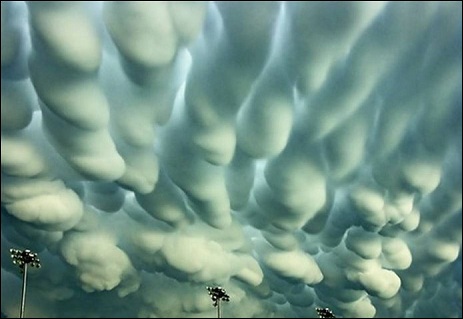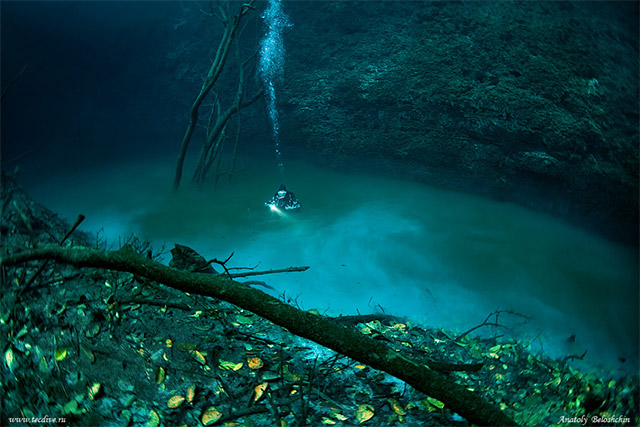Mammatus, also known as mammatocumulus (meaning “mammary cloud” or “breast cloud”), is a meteorological term applied to a cellular pattern of pouches hanging underneath the base of a cloud. The name mammatus is derived from the Latin mamma (meaning “udder” or “breast”), as some consider there is a resemblance between the characteristic shape of these clouds and the breast of a woman.
Characteristics
Mammatus are most often associated with the anvil cloud that extends from a cumulonimbus, but may also be found under altocumulus, altostratus, stratocumulus, and cirrus clouds, as well as volcanic ash clouds.[citation needed] In the United States, sky gazers may be most familiar with the very distinct and more common cumulonimbus mammatus. When occurring in cumulonimbus, mammatus are often indicative of a particularly strong storm or maybe even a tornadic storm. These tend to form more often during warm months and over the midwest and eastern portions of the United States, and more infrequently over the west and southwest. Due to the intensely sheared environment in which mammatus form, aviators are strongly cautioned to avoid cumulonimbus with mammatus.
Mammatus may appear as smooth, ragged or lumpy lobes and may be opaque or semitransparent. Because mammatus occur as a grouping of lobes, the way they clump together can vary from an isolated cluster to a field of mamma that spread over hundreds of kilometers to being organized along a line, and may be composed of unequal or similarly-sized lobes. The individual mammatus lobe average diameters of 1–3 km and lengths on average of 0.5 km. A lobe can last an average of 10 minutes, but a whole cluster of mamma can range from 15 minutes to a few hours. They usually are composed of ice, but also can be a mixture of ice and liquid water or be composed of almost entirely liquid water.

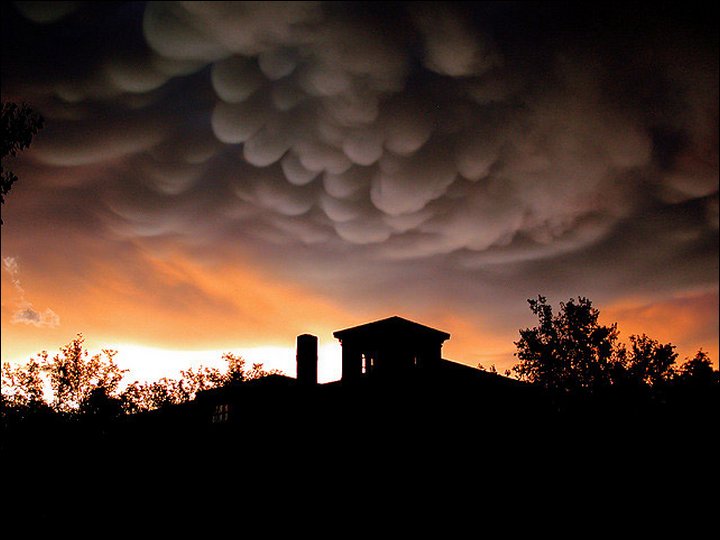
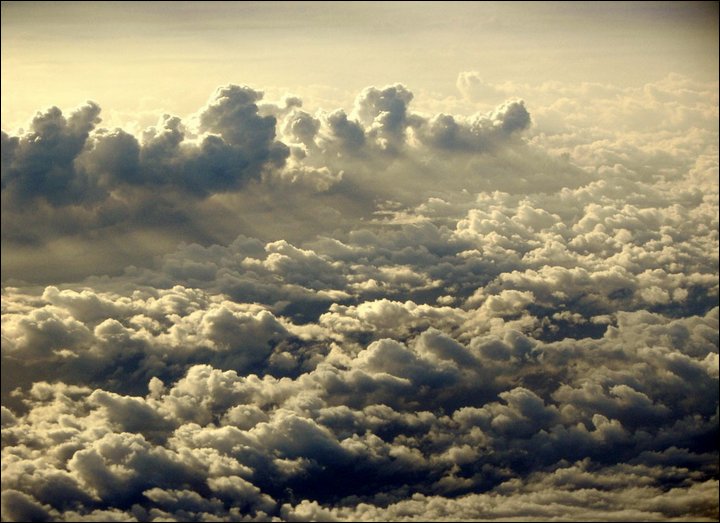
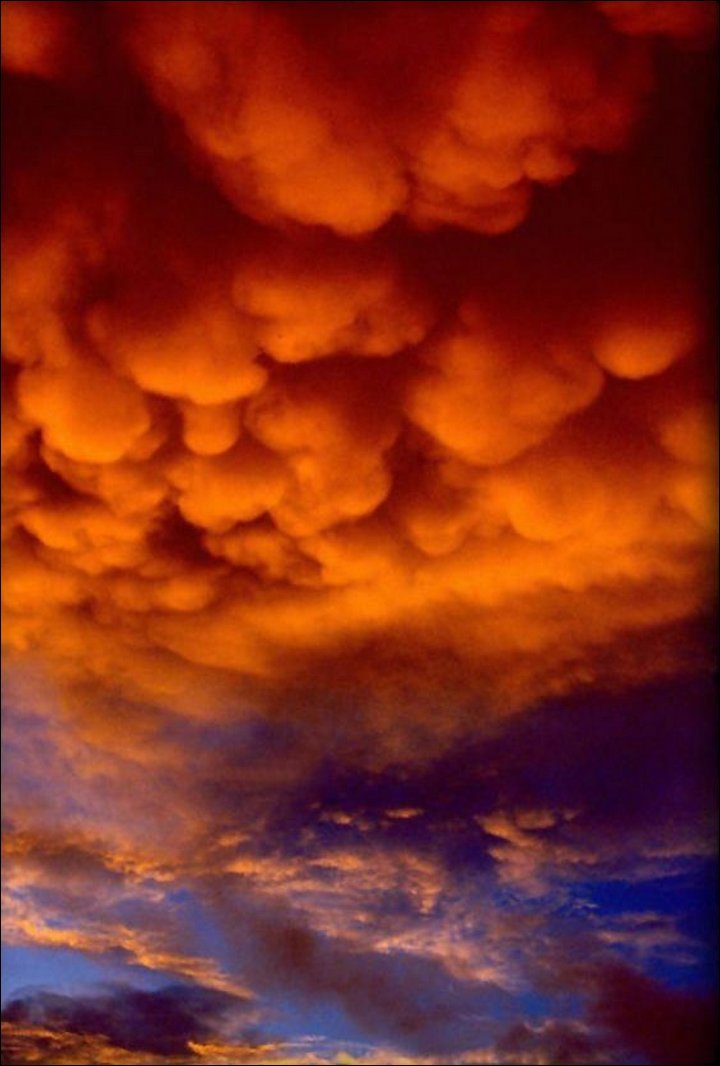
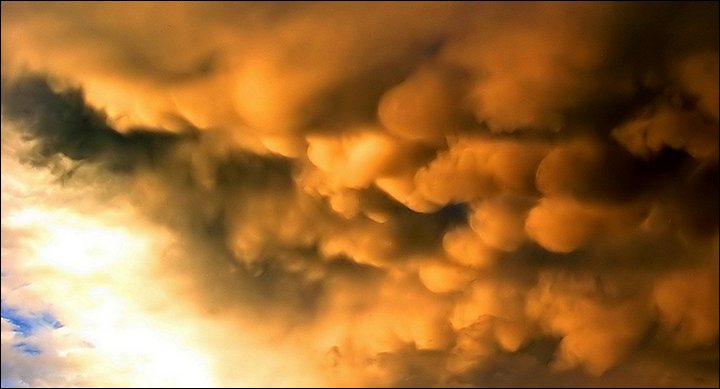
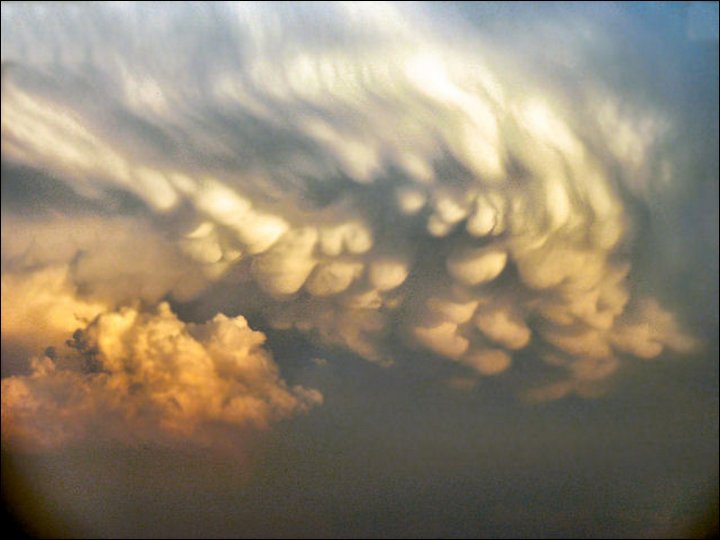
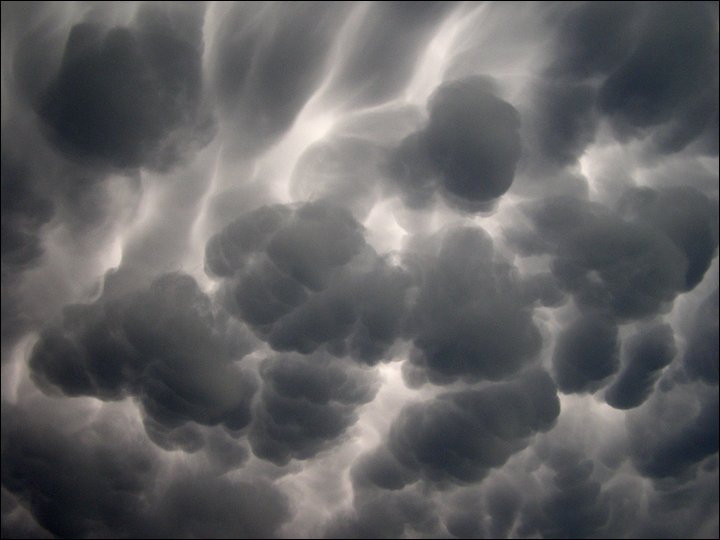
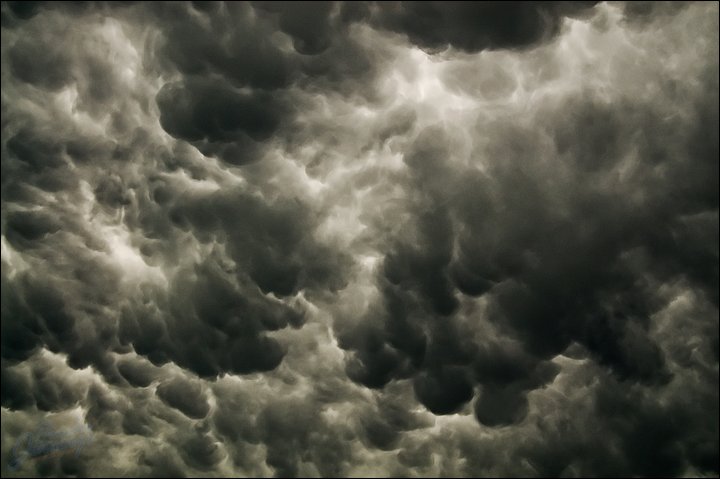
Hypothesized formation mechanisms
A large range of types of mammatus clouds exist, each with distinct properties and in distinct environments. Accordingly, there are multiple hypothesized formation mechanisms. Each is discussed below, but each focuses on proposed formation of mammatus in cumulonimbus anvil clouds specifically. Many of these mechanisms shed light on formation in other cloud forms, but they will not be discussed further.
Despite varying hypothesized formation mechanisms, there is one environmental trend that remains common through all of the formation mechanisms; that is, that across the anvil cloud/sub-cloud air boundary there exist sharp gradients in temperature, moisture and momentum (wind shear), which strongly influence interactions therein. The following are the proposed mechanisms, each described with its shortcomings:
* The anvil of a cumulonimbus cloud gradually subsides as it spreads out from its source cloud. As air descends, it warms. However, the cloudy air will warm more slowly (at the moist adiabatic lapse rate) than the sub-cloud, dry air (at the dry adiabatic lapse rate). Because of the differential warming, the cloud/sub-cloud layer destabilizes and convective overturning can occur, creating a lumpy cloud-base. The problems with this theory are that there are observations of mammatus lobes that do not support the presence of strong subsidence in the lobes, and that it is difficult to separate the processes of hydrometeor fallout and cloud-base subsidence, thus rendering it unclear as to whether either process is occurring.
* That said, cooling due to hydrometeor fallout is a second proposed formation mechanism. As hydrometeors fall into the dry sub-cloud air, the air containing the precipitation cools due to evaporation or sublimation. Being now cooler than the environmental air and unstable, they descend until in static equilibrium, at which point a restoring force curves the edges of the fallout back up, creating the lobed appearance. One problem with this theory is that observations show that cloud-base evaporation does not always produce mammatus. This mechanism could be responsible for the earliest stage of development, but other processes (namely process 1, above) may come into play as the lobes are formed and mature.
* There may also be destabilization at cloud base due to melting. If the cloud base exists near the freezing line, then the cooling in the immediate air caused by melting can lead to convective overturning, just as in the processes above. However, this strict temperature environment is not always present.

